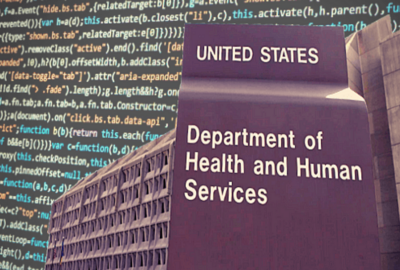Lessons from how Labor is getting out from under its technical debt
Gundeep Ahluwalia, the chief information officer for the Labor Department, said three funding sources, two-year appropriations, a working capital fund and the T...
The Labor Department is well on its way of getting out from under its mounds of technical debt.
The agency is far from finished, but the closing of dozens of data centers and moving dozens applications to the cloud is reducing the amount of legacy IT that supports mission areas.
Gundeep Ahluwalia, the chief information officer for the Labor Department, said the department chipped away at this constant challenge through a multi-pronged approach over the past five years.
“We have closed down more than 80 data centers. We have only a handful of core data centers left, but most of our presence is in the cloud. So what we’ve done is we’ve actually created a hybrid environment between Amazon Web Services and Microsoft’s Azure as well as our data center to make sure that it is a seamless environment when data moves through any of these areas,” Ahluwalia said on Ask the CIO. “That architecture that we have created allows us to modernize in a seamless fashion that is transparent to the users. We don’t want to tax the users with double data entry or going to different areas and things of that nature. All new projects are in the cloud. We do cloud native at this point in time. But also it is important how we have been able to do it a little bit better and different than other departments. It is all about resources at the end of the day.”
Labor already has moved 80 applications to the cloud as well and upgraded its virtual private network connections to make mobile computing easier and more secure.
Ahluwalia said implementing cloud based cybersecurity capabilities are on tap for this year and beyond as well as the continued maturation of the agency’s enterprise data platform, which already is in the cloud, and the tools that run on top of it.
Multiple funding options
The key ingredient to getting out from under the technology debt has been an assortment of funding resources.
Labor’s IT budget has increased over the last few years with an ask for fiscal 2024 of over $1 billion, a $180 million increase over the 2023 request.
In addition to increasing its annual budget request, Ahluwalia said Labor is relying on additional funding from the Technology Modernization Fund as well as collecting unused money into its working capital fund.
“We have the working capital fund right for IT, which allows us to have a little bit of flexibility. By the way, we are also one of the only agencies where most of IT is consolidated in the CIO’s job,” he said. “The flexibility that we have to continue to lobby Congress for IT modernization through direct appropriations is to continue to be fortunate enough to get two-year appropriations. One year appropriations is just not enough to plan enterprise projects and make changes.”
Both the two-year appropriations and the working capital fund lets Labor plan in a more integrated way that brings in the users and take an iterative development approach.
“The other side of this is we have to work with the business units to come up with requirements, do the testing and all of these things. They’re not sitting around; they’re inspecting mines, keeping your 401(k) safe, so this is collateral or additional duties for them to come and help us modernize their systems. You are also hostage to that because they don’t have indefinite time to come and sit with going deep and work on all their systems,” he said. “That is why these are multi-year funding so you can plan for that velocity. You have to take transformation only in the amounts that the two-inch pipe can take, which is why a multilateral fund has been so instrumental in driving that transformation at Labor.”
Labor’s use of the working capital fund seems to be resonating with lawmakers, who last year increased the total amount they can hold in the “bank account” to $36 million from $18 million.
Zero trust progress
In addition to the two-year appropriations and the working capital fund, Labor has won three awards, with the most recent one coming in August, from the TMF board to accelerate specific projects.
Ahluwalia said Labor will continue to apply for TMF funding for big challenges like moving toward a zero trust architecture.
“We have gone to the TMF board to ask for a little more. We have a detailed plan as to how we will be implementing what tools at what capacity on both our infrastructure and on our application base,” he said. “Now, we are trying to resource it either through the TMF board or other mechanisms. The one thing that we did do this year is we started spending some of our tech refresh money in a different manner. Rather than upgrading certain servers, we extended their lives by a year, they’re still supported, but we have moved that money toward the implementation of a zero trust architecture. So unless a clear funding source becomes available from TMF, or from Congress directly, we are reluctant to take up more money out of our mission areas because that it has a downward effect on the admission delivery capacity. But we have moved our resources and we do have a pretty good plan as to how to get there.”
Labor drives all of these investment decisions through its quarterly joint business planning committee.
Ahluwalia said the assistant secretary for management and other mission areas leaders help prioritize investments around the desired policy outcomes.
“I’m telling you at every joint business planning meeting I have conversations with the deputy secretary and components. In fact, every other week, I am briefing the deputy secretary on our progress with zero trust and the cybersecurity executive order, whether it’s multi-factor authentication or event logging,” he said.
Employee training prioritized
Another factor in the success of Labor’s IT modernization journey is the training of its employees.
Ahluwalia said his office allocates $2,000 per CIO office employee annually for training.
“IT organizations like ours have had to completely revamp and reengineer how we architect our solutions. So I have been very conscious to get our IT folks trained and able and in the newer technologies,” he said. “Our folks can go and make sure that they are up to speed with all of these cloud technologies, videoconferencing, new architectures, dual tunneling, wide-area networks and so much more. That’s been a part of the mantra to maintain that edge because at the end of the day, it’s all about people. The laptop will do whatever I asked it to do. But we all have emotions and we have skills, which is why it is so important for me and the entire leadership team at OCIO to make sure that we invest in our people as well.”
Copyright © 2024 Federal News Network. All rights reserved. This website is not intended for users located within the European Economic Area.
Jason Miller is executive editor of Federal News Network and directs news coverage on the people, policy and programs of the federal government.
Follow @jmillerWFED







